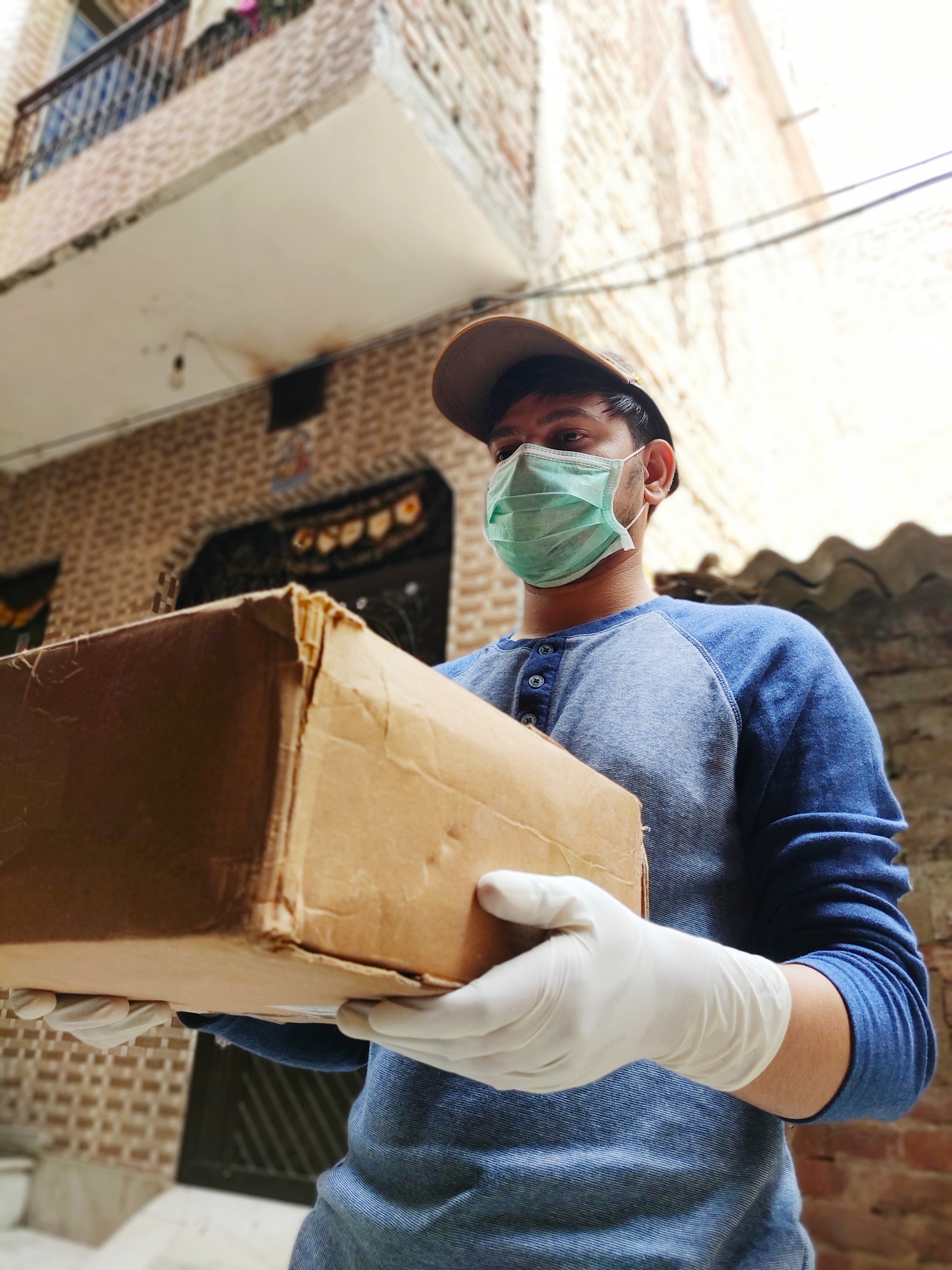This blog is part of the COMPAS Coronavirus and Mobility Forum.
The COVID-19 lockdowns have created a Petri dish of experiments in the public distribution of food and, experiences of hunger for India. All scales of government racing to find ways of feeding their constituents. Delivery and intra-city logistics platforms have played multiple roles in these experiments. In this flux of broken public infrastructure and private efficiencies, what happens to the labouring bodies of platform service providers?
The platforms’ speed, agility and scale were first deployed for governments’ trials in hunger logistics. These three characteristics have proven useful in highlighting what is lacking in local governments in urban India. The service provider workforce is key to the platforms’ usefulness – a standby workforce of mobile bodies that can be deployed algorithmically to access parts of the city that are less visible to state authorities. Food delivery and other logistics platforms like Shadowfax, Delhivery, and the bike-taxi platform Rapido worked alongside city and state governments to deliver dry rations, food packets and household essentials to scores of those who were unable to buy food in the open market because they lost wages when the economy shut down.
These experiments in food distribution and hunger management in India have been tied to consumer power. For those who were able to buy food in the market, this has meant that governments and police shaped retail protocols around consumption during the lockdown. Swiggy and Zomato, India’s two largest food delivery platforms, were officially allowed to operate in most states. They were the ‘safer’ alternative to acquiring food, groceries, medicines, and other essential items by individual customers themselves. In the myriad government orders passed by the national and state governments dictating what was allowed and not allowed, the operations of food delivery platforms were seldom curtailed. Many other smaller food delivery platforms, or platforms in different service segments, created grocery and food delivery services to ensure they kept their companies afloat when most economic activity was paused in the country. A highly surveilled workforce of delivery workers, thus engaged to serve the needs of urban residents, managed to make some earnings through this consumer demand. Body temperatures became a key measure in monitoring COVID-infection, used to quickly draw workers into and out of the platforms’ labour market regardless of what had actually caused the fever.
The share of work done in the informal economy is high in Indian cities, as are the number of migrants who live and work in cities engaging in informal work—where “work from home” is unviable. For them, kitchens are often not available, and food is bought and consumed on a day to day basis. They have been teetering close to impoverishment because of the lockdown. Local governments like municipalities and district level units have become the implementors of food programs even though in cities and peri-urban areas, they lack the resources – manpower, money and political enforcement to run these systems that too, at a scale required of them.
New Delhi, the country’s largest metropolitan region, experimented with the idea of serving packaged meals to stranded migrant populations for the first few weeks of the March-April 2020 lockdown. Given the city-state’s status as a key metropolis for migrants seeking work, the most precarious—without sure housing, often migrants in informal work—had to also be fed. These are working class migrants who tend to reside in their places of work – small garment setups, manufacturing of other goods. They were forced out of these spaces and were stranded with no place to stay or cook.
For these people, cooked meals had to be delivered to temporary shelters, or informal settlements that came up anywhere in the city’s 1,500 sq km area. Swiggy was an initial partner of the Delhi Government delivering 200,000 meals a day for the first two weeks of the lockdown. These meals were made in Delhi Government kitchens and delivered by delivery people on bikes. In the coming months, Swiggy and its competitor Zomato tied with up with community kitchens, NGOs, and state governments to fund and deliver food packages around the country.
In Delhi as with many other cities, as the lockdown proceeded, the shipment of dry food supplies—wheat, rice, cooking oil, etc.—became a key issue to solve. Shadowfax, a last mile delivery service that provides services for businesses, partnered with the Delhi Government to provide small trucks, lorries and staff for this task, enabling the supply of over 250 tonnes of dry ration and other essentials across 15 areas of the city. The government also partnered with bike taxi platform Rapido to deliver milk for children and cooked food to houses in North West and South Delhi.
Experiments in finding the right partners for the Delhi Government’s food distribution efforts eventually ended in a partnership with e-rickshaw unions. The autorickshaw and e-rickshaw drivers in New Delhi have been a key voter base to the Aam Aadmi Party (Common Man's Party), the ruling party of the Capital Territory of Delhi. These transport workers form a key last-mile leg of the metro and bus transit systems in the city or offering intermediate public transport options for areas off these routes.
Aditi Surie is a Consultant at the Indian Institute for Human Settlements and is also a member of the international research project PEAK Urban.
